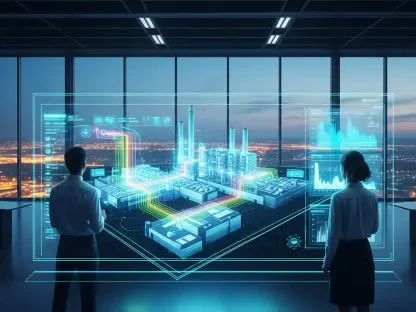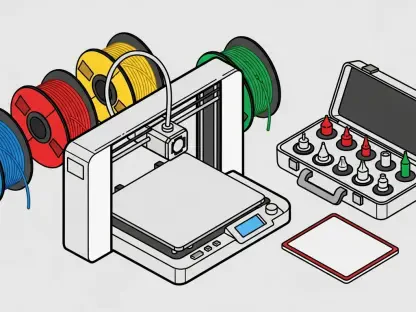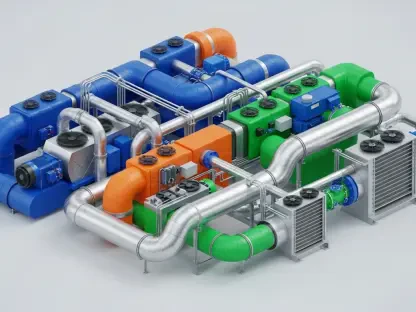In a world where industrial control systems (ICS) underpin the backbone of critical infrastructure, the recent wave of cyber vulnerabilities exposed by the Cybersecurity and Infrastructure Security Agency (CISA) serves as a stark reminder of the fragility of these environments. On September 2 of this year, CISA issued four urgent advisories detailing flaws in widely used ICS products across sectors like utilities, manufacturing, and energy. These vulnerabilities, if left unaddressed, could lead to catastrophic disruptions, from unauthorized access to operational shutdowns. The escalating sophistication of cyber threats targeting industrial systems demands immediate attention from organizations reliant on such technology. As adversaries exploit software and hardware weaknesses, the potential for compromised safety and grid stability looms large, urging a deeper examination of the risks and necessary defenses.
Emerging Vulnerabilities in Industrial Environments
Critical Flaws Across Diverse Systems
The scope of the vulnerabilities highlighted by CISA spans an array of ICS products, affecting multiple vendors and applications critical to industrial operations. From Delta Electronics’ EIP Builder to Hitachi Energy’s Relion protection relays, the advisories reveal a troubling trend of flaws that could enable unauthorized access, remote code execution, or denial-of-service attacks. These issues are not isolated but reflect a broader attack surface in industrial settings where interconnected systems amplify the impact of a single breach. For instance, a path traversal flaw in EIP Builder could allow attackers to manipulate file paths and access sensitive data, while a buffer overflow in Fuji Electric’s FRENIC-Loader 4 poses risks of malicious code execution through oversized payloads. The diversity of affected systems underscores the complexity of securing industrial environments against evolving threats, emphasizing that no sector or vendor is immune to these challenges.
Consequences of Delayed Action
Failing to address these vulnerabilities promptly can result in severe operational and safety consequences for organizations managing critical infrastructure. Unpatched systems are vulnerable to exploitation that could disrupt essential services, such as energy output or manufacturing processes, leading to financial losses and potential harm to public safety. For example, an authentication bypass in SunPower’s PVS6 solar inverter platform might allow attackers to manipulate HTTP requests and access privileged functions, directly threatening grid stability. Similarly, insufficient input sanitization in Hitachi Energy’s relays could trigger denial-of-service scenarios, halting protective mechanisms. The cascading effects of such disruptions highlight the urgency of implementing CISA’s recommended mitigations, as delayed responses could transform manageable flaws into full-scale crises, compromising workstations and altering critical settings across industrial networks.
Strategies for Strengthening Cybersecurity Posture
Immediate Mitigation and Vendor Updates
Addressing the newly identified vulnerabilities requires swift action through vendor-provided updates and patches as a primary line of defense. CISA’s advisories outline specific fixes for each affected product, such as upgrading Delta Electronics’ EIP Builder to version 3.2.14 or applying SunPower’s update to version 2.1.4 for the PVS6 platform. These updates often resolve critical flaws like path traversal or authentication bypasses, closing entry points for potential attackers. Beyond patches, organizations should prioritize restricting network access to trusted systems and enforcing input validation to prevent exploitation. For Fuji Electric’s FRENIC-Loader 4, application whitelisting and user training on verifying file sources are also advised to counter risks from malicious payloads. Taking these immediate steps not only mitigates current threats but also builds a foundation for resilience against similar vulnerabilities that may emerge in the future, ensuring operational continuity.
Long-Term Security Practices
While immediate patches are essential, adopting long-term security practices is equally critical to safeguard industrial systems against the evolving cyber threat landscape. Network segmentation stands out as a key strategy, isolating critical components to limit the spread of an attack if a breach occurs. Real-time monitoring and anomaly detection can further enhance defenses by identifying unusual activity before it escalates into a significant incident. Multi-factor authentication, as recommended for platforms like SunPower’s PVS6, adds a vital layer of protection against unauthorized access. Additionally, regular user training and scheduled maintenance upgrades, such as those suggested for Hitachi Energy’s Relion relays, help address human error and outdated systems. By integrating these comprehensive measures into their cybersecurity frameworks, organizations can reduce the likelihood of exploitation and better prepare for the diverse and sophisticated threats targeting industrial environments over time.
Building a Layered Defense Approach
Creating a robust, layered defense approach is fundamental to protecting industrial systems from the wide range of vulnerabilities outlined in CISA’s advisories. This strategy involves combining immediate technical fixes with proactive policies, such as enforcing strict access controls and maintaining detailed logs for monitoring potential intrusions. For instance, addressing the Modbus interface flaws in Hitachi Energy’s relays requires not just firmware updates but also limiting exposure to untrusted networks. Similarly, fostering a culture of cybersecurity awareness among staff can prevent accidental vulnerabilities, such as opening malicious files in Fuji Electric’s software. A layered defense also means anticipating future risks by staying informed about emerging threats and adapting security protocols accordingly. This holistic perspective ensures that industrial environments are not only reacting to current issues but are also fortified against the next wave of cyber challenges, preserving both safety and stability.









